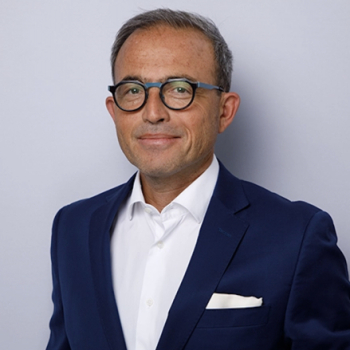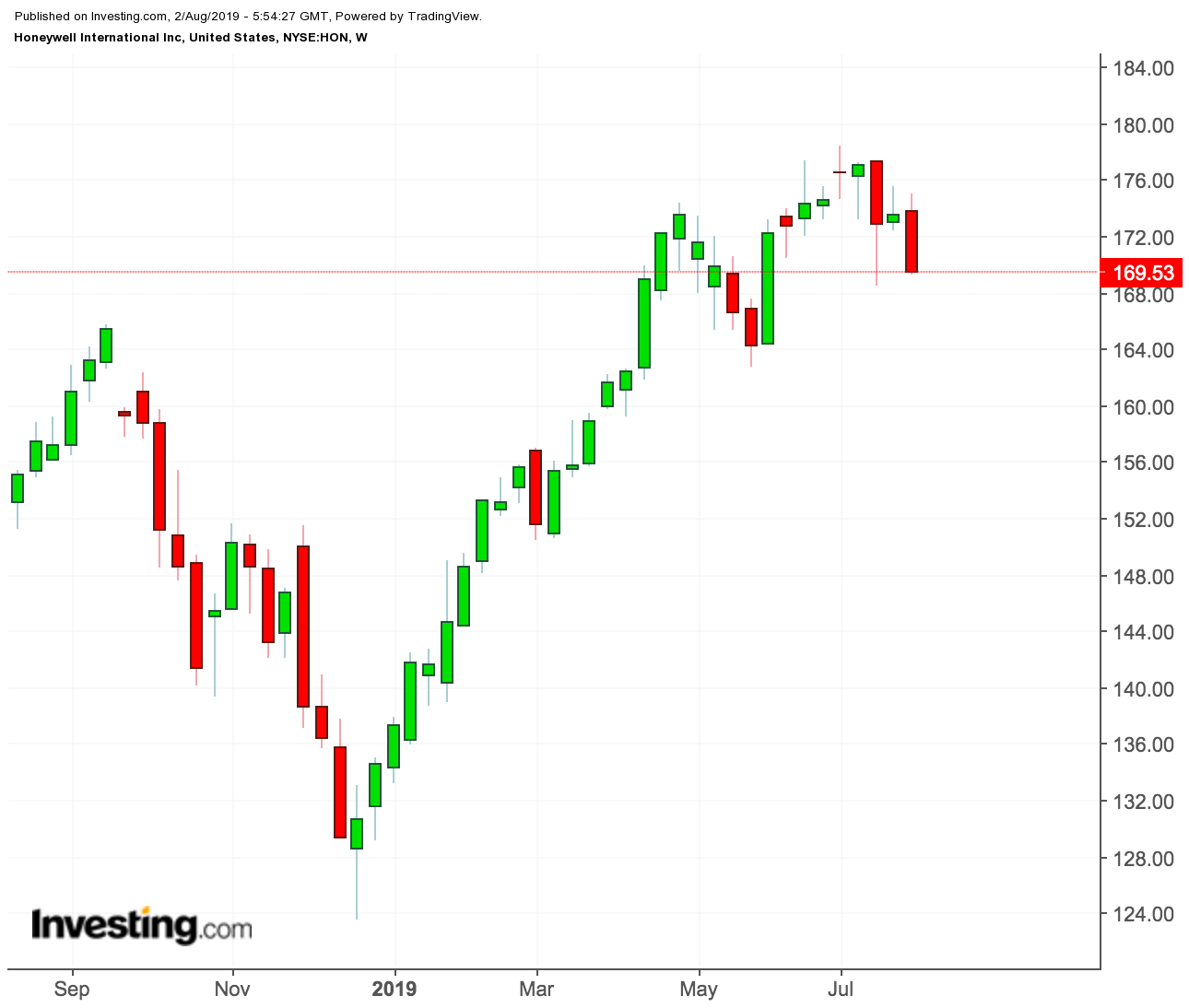
- All Instrument Types
- Indices
- Equities
- ETFs
- Funds
- Commodities
- Currencies
- Crypto
- Bonds
- Certificates
Please try another search

Is Honeywell The Best Industrial Stock To Survive The Global Economic Recession?

The outlook for industrials is becoming gloomier by the day. Signs of slackening industrial activity all round is mounting and this definitely doesn't seem to be right time to be investing in industrial stocks. Companies whose fate is closely tied with the health of the economy generally underperform when risks to growth accelerate. But Honeywell International may be one of the few exceptions to that rule.
Evidence of subsiding industrial activity is becoming more apparent across the board. New U.S. factory orders stagnated in June, while the JPMorgan Global Manufacturing Purchasing Managers Index posted its second straight contraction, the first time that’s happened since 2012, according to Bloomberg data. The U.S.-China trade war is nowhere near resolution.
But one stock we believe is well-positioned to withstand the possible storm is Honeywell International Inc. (NYSE:NYSE:HON). The company’s latest earnings report has shown that the company has the right product mix to guarantee growth in a downturn.
In the most recent quarter, its earnings per share grew 9%, while organic sales in its largest division, aerospace, rose 11%. With these strong numbers, Honeywell also raised its full-year forecast and reported increased demand in most divisions.
In contrast, 3M (NYSE:MMM) Co., one of the largest industrial companies that makes Post-its to air filters and touch screens, reported both sales and profit fell, citing challenges ranging from high raw-materials prices to unfavorable foreign-exchange rates to headwinds in China.
The Strength of Honeywell’s Portfolio
Honeywell’s diversified portfolio provides a lifeline to many industries, including homes and building, aviation, defense and space. The company’s enduring competitive advantage is so large that it’s hard to challenge its dominance on a global scale.
For the current fiscal year, Honeywell expects to record its highest profit margin in more than two decades, helped by robust demand in aviation parts and a booming market for warehouse automation equipment.
Darius Adamczyk, who is in his second year as the CEO, is trying to transform the 134-year industrial giant into an enterprise with a start-up culture. He has introduced more software-based products since he took control, to help clients better manage their supply-chain.
He believes that the company has a solid long-cycle portfolio of products, such as jet engines, to fuel growth even if the global economy gets hurt or a trade war with China further escalates.
“We’ve seen some slowing in certain short-cycle businesses that has been overcome by the strong performance in the rest of the portfolio,” he told analysts on a conference call last month as cited by the Wall Street Journal.
Together with this strong financial outlook, Honeywell also has an impressive track record when it comes to paying dividends. With a dividend yield of under 2%, its $0.82 a share quarterly dividend has grown over 11% per year during the last five years. Honeywell has paid uninterrupted dividends for more than two decades, while maintaining a low payout ratio, currently at 49%.
Bottom Line
Honeywell’s shares, which closed yesterday at $169.59, are up nearly 30% this year and have doubled in the past five years. Some investors would see buying this name as a risky bet, especially with the economy in this late boom cycle. But we still see value in this trade and advise investors to take a long-term position. It’s hard to find an industrial stock which is as well-prepared as HON is to perform in the fast changing economy.
Related Articles

The Strategic Metals Ready to Skyrocket WisdomTree has launched the WisdomTree Strategic Metals UCITS ETF (WENU), offering investors access to the clean technology and battery...

This year tracks as a record for ETF launches among US issuers Investors have demanded high-yield, protection, and crypto-related funds in 2024 New strategies emerge, including...

What about performance? In the first blog of this two-part series, we analysed the real difference between active ETFs and, let’s say, ‘classic’ ETFs in Europe. We noted two main...
Are you sure you want to block %USER_NAME%?
By doing so, you and %USER_NAME% will not be able to see any of each other's Investing.com's posts.
%USER_NAME% was successfully added to your Block List
Since you’ve just unblocked this person, you must wait 48 hours before renewing the block.
I feel that this comment is:
Thank You!
Your report has been sent to our moderators for review





Add a Comment
We encourage you to use comments to engage with users, share your perspective and ask questions of authors and each other. However, in order to maintain the high level of discourse we’ve all come to value and expect, please keep the following criteria in mind:
Perpetrators of spam or abuse will be deleted from the site and prohibited from future registration at Investing.com’s discretion.